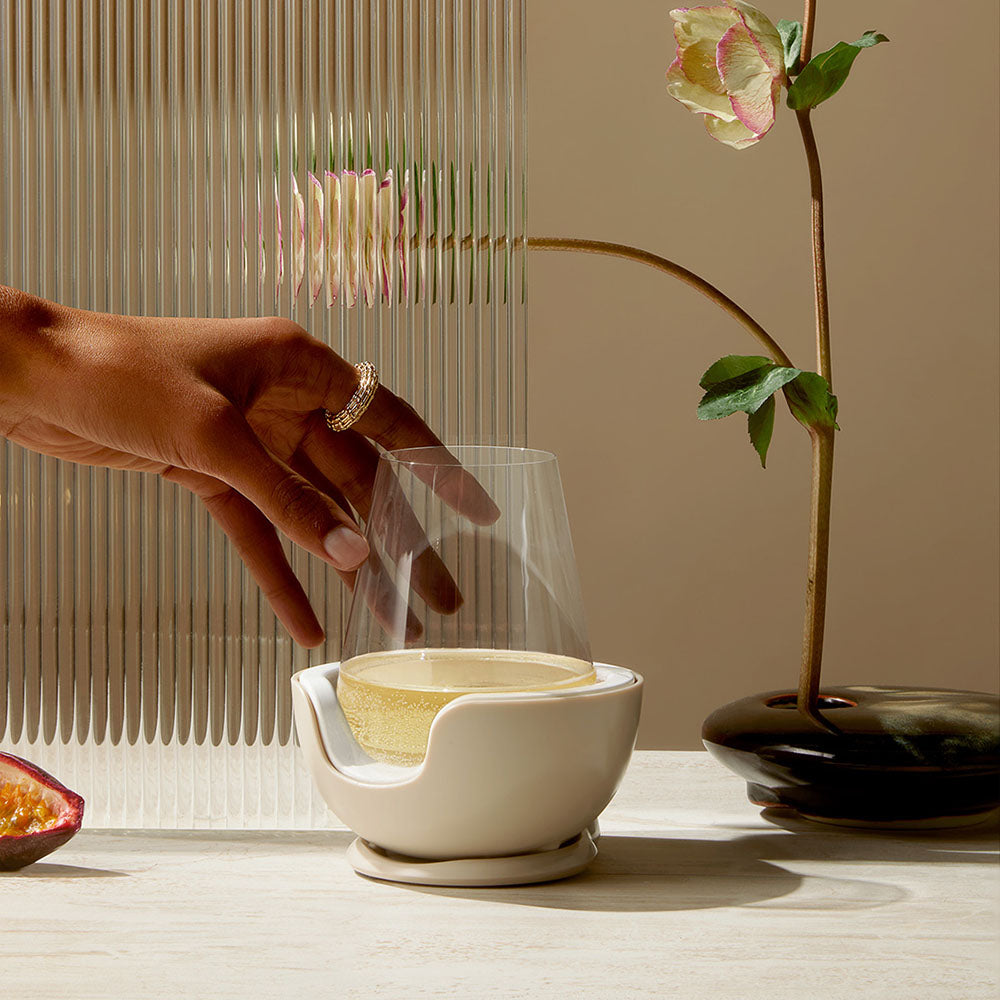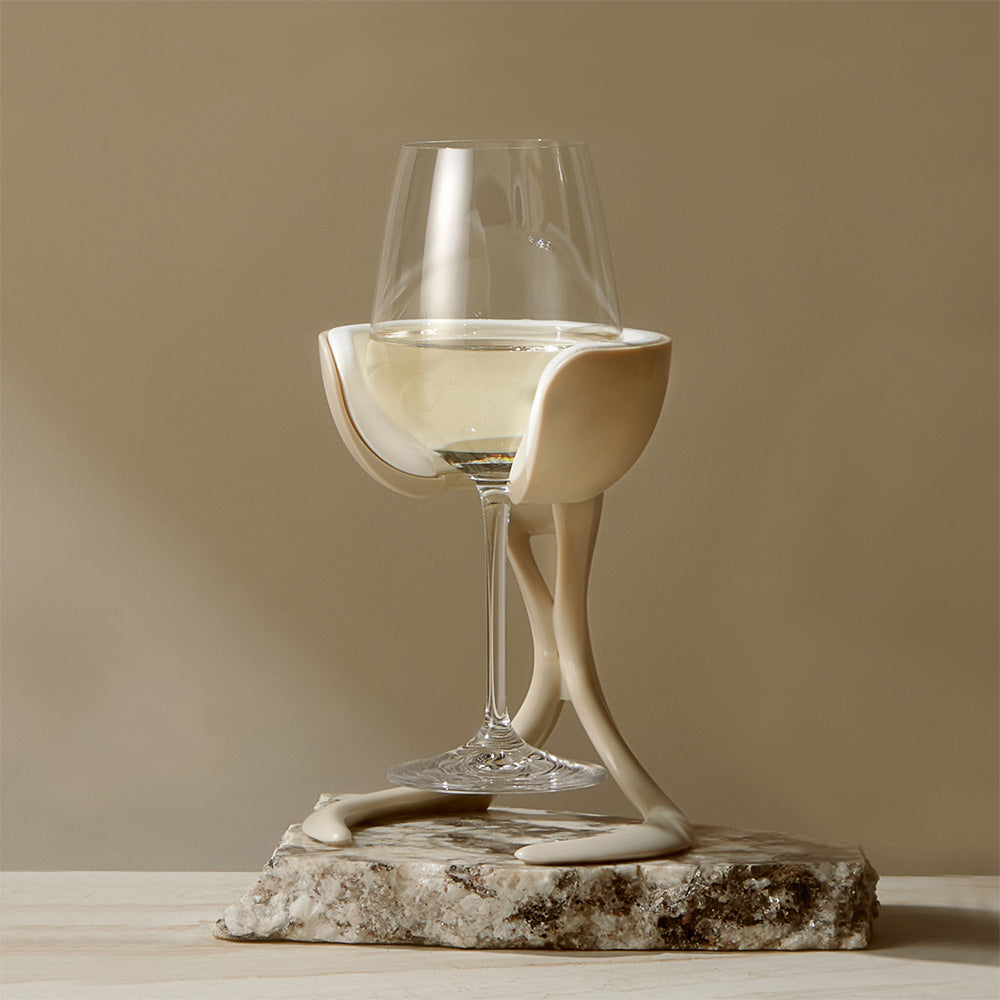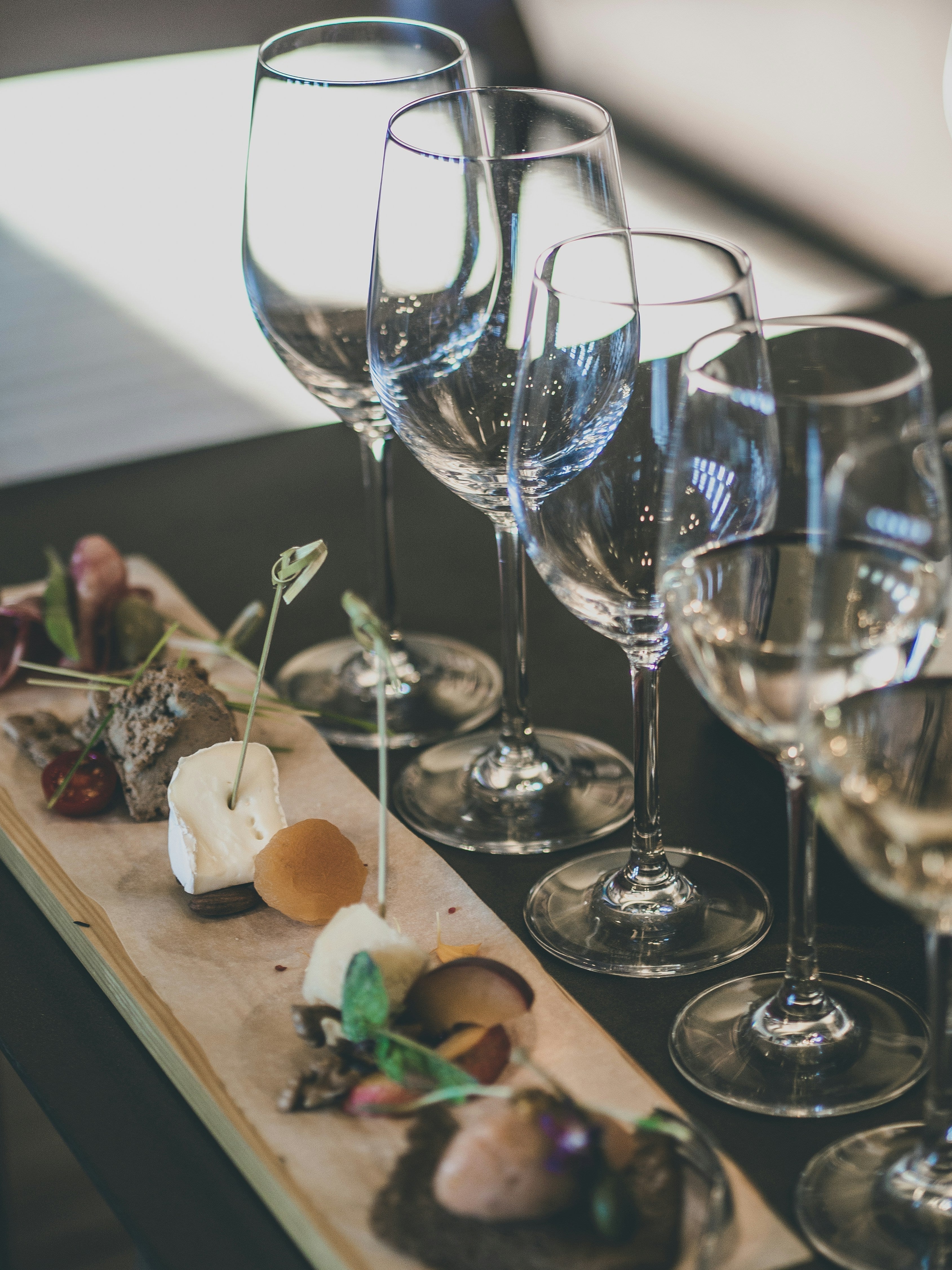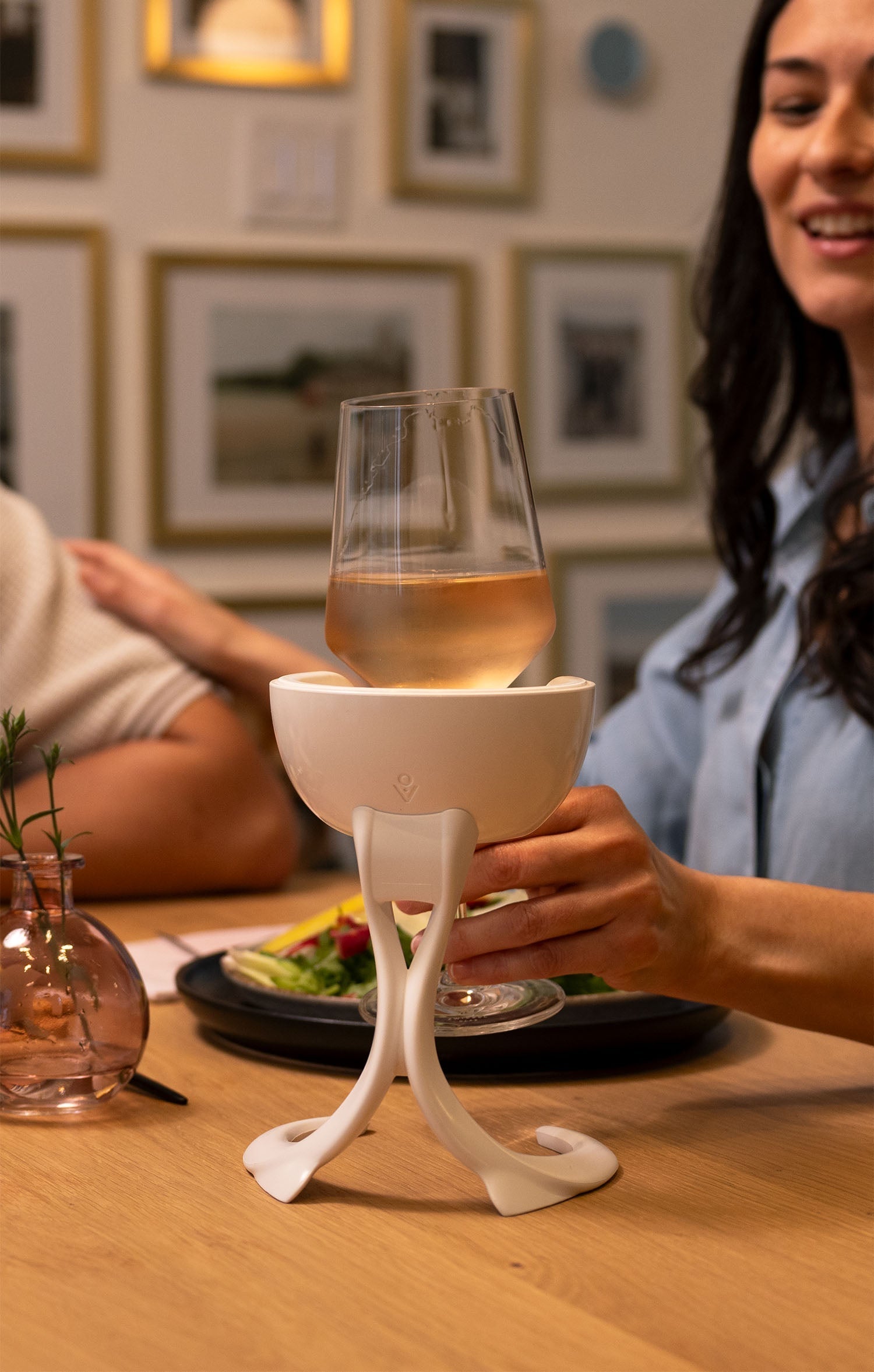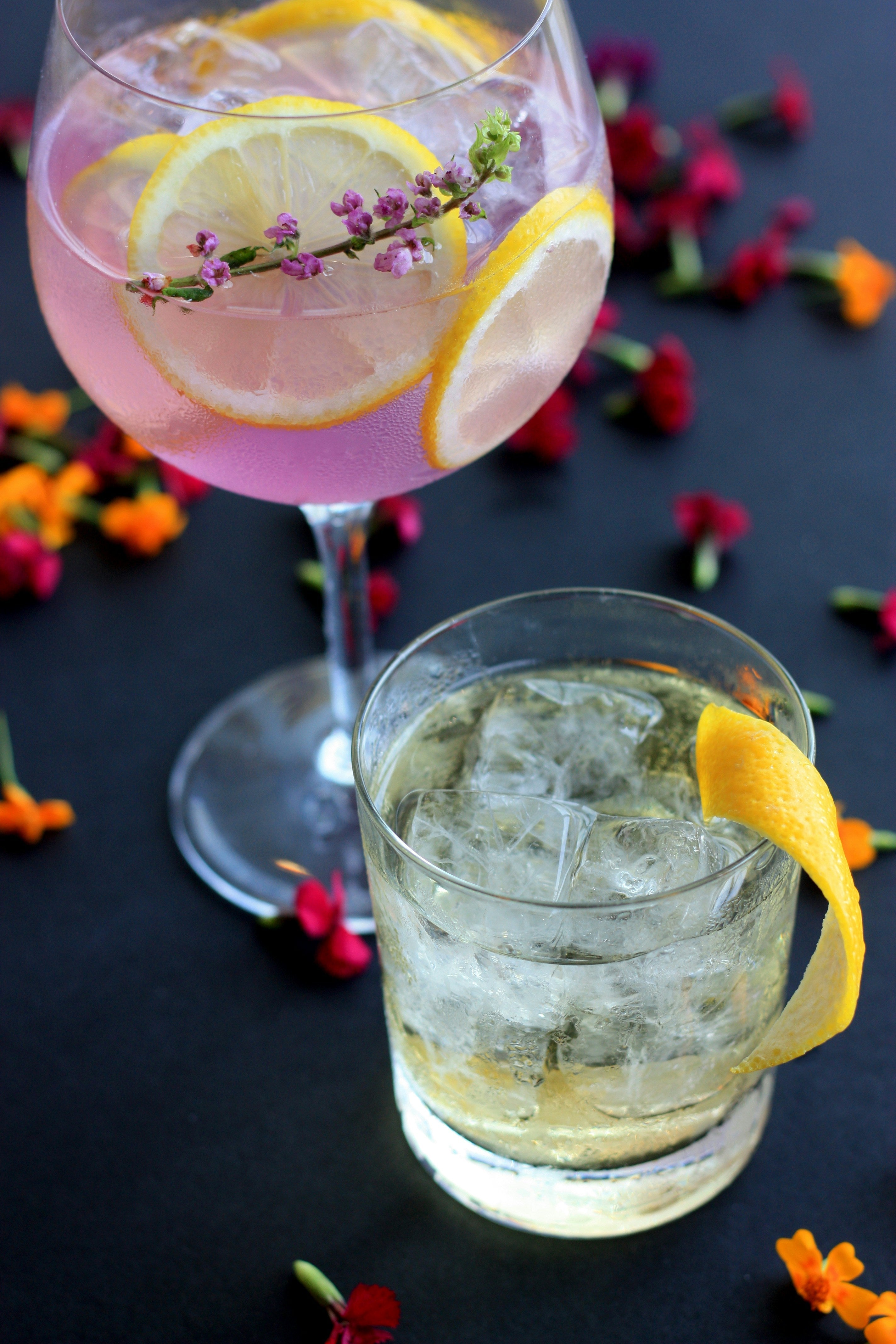Wine tasting at home is more than just sipping and swirling, it's about creating an experience. This experience lets you slow down and enjoy each moment.
You can truly appreciate the details of every bottle.
Whether you love wine or want to learn more, hosting a wine tasting at home is a great idea. It brings people together, lets you explore new flavors, and makes any evening special.
Step 1: Set the Scene for a Slow-Sipping Experience
Unlike traditional wine tastings, which often rush through multiple wines in a structured format, this is about mindful appreciation.
Tips for setting the perfect ambiance:
- Soft, warm lighting – Avoid harsh lights that interfere with how the wine appears in the glass. Candlelight or dimmable lamps create a cozy, relaxed atmosphere.
- Minimal distractions – Turn off the TV and put away devices to be present in the moment.
- A curated playlist – Opt for a soft jazz, classical, or acoustic playlist to enhance the mood.
- Comfortable seating – Arrange seats to encourage conversation, but also allow for a moment of quiet reflection with each sip.
Step 2: Selecting the Right Wines
When choosing wines, consider a theme that helps guide your tasting experience. Here are a few fun ideas:
- A Tour of the World: Choose wines from different regions, like a French Bordeaux, an Italian Chianti, and a California Pinot Noir.
- Old World vs. New World: Compare classic European wines with their modern counterparts from the U.S., South America, or Australia.
- Blind Tasting Challenge: Cover the labels and see if guests can guess the grape variety, region, or price point.
- Seasonal Pairings: Light, crisp wines for summer, bold and rich reds for winter.
Pro Tip: Aim for 3-5 wines max to avoid palate fatigue. Stick to 1-2 ounces in each wine glasses per person so everyone can enjoy without overindulging.
Step 3: The Art of Slow Sipping – How to Taste Like a Sommelier
Many wine tastings focus on flavors and food pairings, but they often miss the sensory journey. To elevate your wine experience, introduce a slow sipping technique that engages all five senses.
1. See
Hold your wine glass at an angle against a white background. Observe:
- The color and clarity – Lighter wines tend to be younger, while deeper colors may indicate age.
- The legs (or tears) – These are the streaks running down the glass after you swirl. More legs can indicate higher alcohol content.
2. Smell
Before taking a sip, gently swirl your glass to release the wine’s aromas.
Take a deep inhale and identify different notes:
- Fruity? (berries, citrus, apple)
- Floral? (roses, lavender, violets)
- Earthy? (oak, tobacco, leather)
- Spicy? (vanilla, pepper, cinnamon)
3. Sip & Hold
- Take a small sip and let it coat your entire palate before swallowing.
- Notice how the flavors evolve—from the initial taste to the lingering finish.
- Does the wine feel light or full-bodied? Dry or sweet? Tannic or smooth?
4. Pair & Experiment
This is where you can get creative! Traditional food and wine pairing rules are great, but encourage playfulness.
Try unexpected pairings like:
- Chardonnay with popcorn – The butteriness of the popcorn enhances the wine’s richness.
- Pinot Noir with dark chocolate – The tannins complement the bitterness of the chocolate.
- Rosé with spicy food – The acidity balances out heat beautifully.
Did You Know? You don’t need fancy tasting note cards—simply jot down notes about what flavors stand out and how they change with different pairings.
Pro Tip: Impress your guests with wine pronunciation as you guide them through the different regions.
Step 4: Choosing the Right Glassware & Serving Temperatures
One of the most overlooked aspects of wine tasting is glassware. The shape of the glass affects how aromas and flavors develop, making a significant difference in your tasting experience.
- Red Wine Glasses: Large, round bowls allow oxygen to enhance aromas.
- White Wine Glasses: Smaller bowls help preserve crispness and acidity.
-
Sparkling Wine Glasses: Tall flutes help maintain bubbles, but tulip-shaped glasses can enhance aroma.
Serving Temperature Guide:
- Red wines: 60-65°F – Let them breathe for 15-30 minutes before serving.
- White wines: 50-55°F – Too cold, and you’ll lose aroma; too warm, and they’ll taste flat.
- Sparkling wines: 45°F – Best served well-chilled to keep the bubbles lively.
Pro Tip: Use a personal wine chiller like VoChill to support your at home wine tasting party. This allows each persons glass to be chilled to perfection to truly enhance the taste of the wine.
Curious why chilling wine releases the wine's natural flavor? Learn how heat affects your wine.
Step 5: Elevate the Tasting with Multi-Sensory Elements
To make your wine tasting unique, add multi-sensory elements:
Color Pairing – Use color psychology to set the mood. Reds and warm tones encourage lively conversation, while blues and purples evoke calmness.
Scent Pairing – Have small bowls of dried herbs (rosemary, thyme, vanilla beans) so guests can compare those scents to the wine.
Music & Wine Pairing – Play different genres of music and see how they alter your perception of the wine. Research suggests that classical music enhances the taste of fine wines, while jazz can make reds taste smoother!
Step 6: Create a Memorable Takeaway
Give your guests a small token to remember the experience:
- A printable wine tasting scorecard
- Mini bottles of wine from the tasting
- A list of recommended pairings they can try on their own
Final Sip: Savor Every Moment
Hosting a wine tasting at home is not just about learning the difference between Cabernet Sauvignon and Merlot. It’s about creating a moment to enjoy.
By embracing the slow sipping lifestyle, you turn an ordinary evening into a special experience. This invites connection, appreciation, and enjoyment of the little things.
So pour a glass, take your time, and enjoy every sip. Cheers!
If you're excited to plan a wine tasting and need some suggestions, read our guide on Hosting to Impress.



